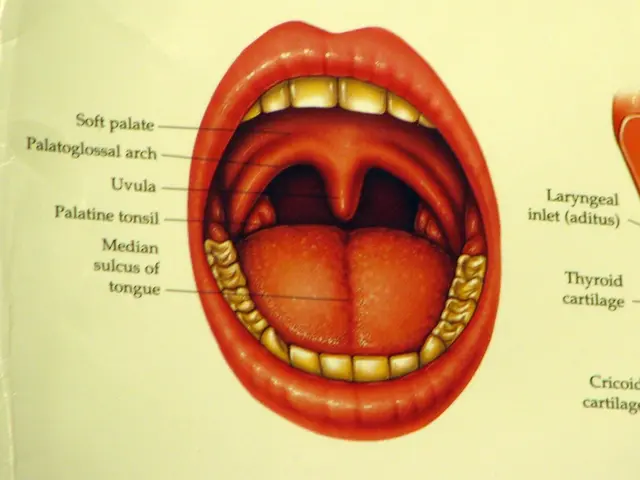In the EU, 2025 marks a crucial time for decreasing methane emissions due to groundbreaking regulations. Here's what's set to change:
Take Control of Methane Emissions: Europe's Strategy Unveiled
Hit the Brakes on Global Warming: Europe's Battle with Methane Emissions
🔗 Facebook 🔗 Twitter 🔗 Flipboard 🔗 Send 🔗 Reddit 🔗 Linkedin 🔗 Messenger 🔗 Telegram 🔗 VK 🔗 Bluesky 🔗 Threads 🔗 Whatsapp
Methane emissions, responsible for around 30% of the rise in global temperatures since the Industrial Revolution, have been the focus of attention in Europe. The International Energy Agency (IEA) reports that the region's methane emissions, particularly from coal mines, have finally dropped due to stringent regulations.
🔗 A Historic First: Europe's Decline in Coal Mine Methane Emissions
Europe is the first to officially constrain this major pollution source after adopting the Methane Regulation last year. In 2024, coal mine methane emissions decreased by 8% compared to 2023, marking a significant milestone in the fight against methane emissions.
🔗 The Pivotal Role of the EU Methane Regulation
The EU Methane Regulation is a groundbreaking measure, setting a threshold for active and abandoned underground mines in terms of emissions. It requires the fossil fuel industry to implement comprehensive systems for measuring, reporting, and verifying methane emissions. Routine flaring and venting are prohibited, and leak detection and repair (LDAR) mandates are introduced for all oil and gas facilities[1].
In addition, by 2027, importers must demonstrate that imported fossil energy meets the same requirements[1]. This endeavor sets the stage for a level playing field, fostering cleaner operations and enhancing the EU's ability to choose low-emission partners.
🔗 Addressing Imports: A Key Consideration
The EU faces a considerable challenge in reducing methane emissions due to the reliance on imported fossil fuels. According to the IEA's 2025 Global Methane Tracker, methane emissions from the supply chain for oil, gas, and coal imports constituted approximately 6 Mt in 2024, nearly four times more than what Europe emits within its own fossil fuel sector[1].
To combat this issue, the EU Methane Regulation dictates that by 2030, methane intensity thresholds will apply, effectively acting as an emissions cap for foreign energy entering the European market[1].
🔗 Roadblocks and Opportunities
While Europe has made significant strides in reducing methane emissions, challenges remain. Discussions are underway regarding the potential easing of methane rules to avoid trade tensions, particularly with gas from the US[4]. The EU's success hinges on maintaining the integrity of these regulations and collaborating with global partners to combat this urgent issue.
🔗 Abandoned Underground Mines
Abandoned underground coal mines constitute a significant and often overlooked source of methane emissions. When mining creates a route to the surface, much of the methane escapes. If it is not plugged, these emissions can continue for decades after a mine is abandoned[2].
🔗 The Future of Methane Emissions
With a comprehensive strategy in place, Europe is on track to curb methane emissions substantially. However, continued vigilance, international cooperation, and innovative solutions are needed to address this pressing global issue.
Related:- Methane: Make or Break the Planet's Warming Limit- Coca-Cola and Unilever Among Plastic Brands Tied to Texas Fracking
- oil industry
- greenhouse gas emissions
- methane
- coal phase-out
- Natural gas
- Fossil fuels
[1] Ember (2025). Coal mine emissions drop after EU Methane Regulation takes effect. [Online] Available at: https://ember-climates.org/blog/coal-mine-emissions-drop-after-eu-methane-regulation-takes-effect/
[2] European Commission (2024). Methane Emissions Reduction Regulation. [Online] Available at: https://ec.europa.eu/clima/policies/methane/legislation_en
[3] IEA (2025). Global Methane Tracker. [Online] Available at: https://www.iea.org/data-and-stats/our-analysis/methane
[4] Farkas, A., Reiche, M., Chenang, R., Neuhof, V. (2025). The US and the EU prepare for climate negotiations: Opportunities and threats for US carbon diplomacy. Moreno Valley, CA: UC Riverside Center for Sustainable Suburban Development.
Collaboration in Science: The battle against methane emissions requires global cooperation. Studying best practices in countries like Europe can contribute to the advancement of environmental science and mental health, as climate change and health-and-wellness are intrinsically connected.
Impact on Health: Reducing methane emissions is not merely a climate change issue but also a public health concern. Lessening global warming can contribute to overall health improvements, as increased temperatures have been linked to negative mental and physical health effects.
Innovative Solutions: Innovation in the fossil fuel industry is crucial for meeting the EU's stringent methane emission requirements. Pursuing cleaner energy alternatives and implementing technology that reduces methane leaks from oil and gas facilities can contribute to a healthier environment and a greener, sustainable world.
Raising Awareness: Marking the decline in coal mine methane emissions is essential for raising awareness about methane's impact on global warming and the urgent need for action. Public and private sector organizations should work together to disseminate information, promote best practices, and encourage sustainable practices.
Monitoring and Reporting: Regular monitoring and reporting of methane emissions will help track progress and identify areas for improvement. This data will be crucial in sustaining the reductions achieved so far and setting new, ambitious targets to further combat climate change, improve air quality, and safeguard the health-and-wellness of future generations.







